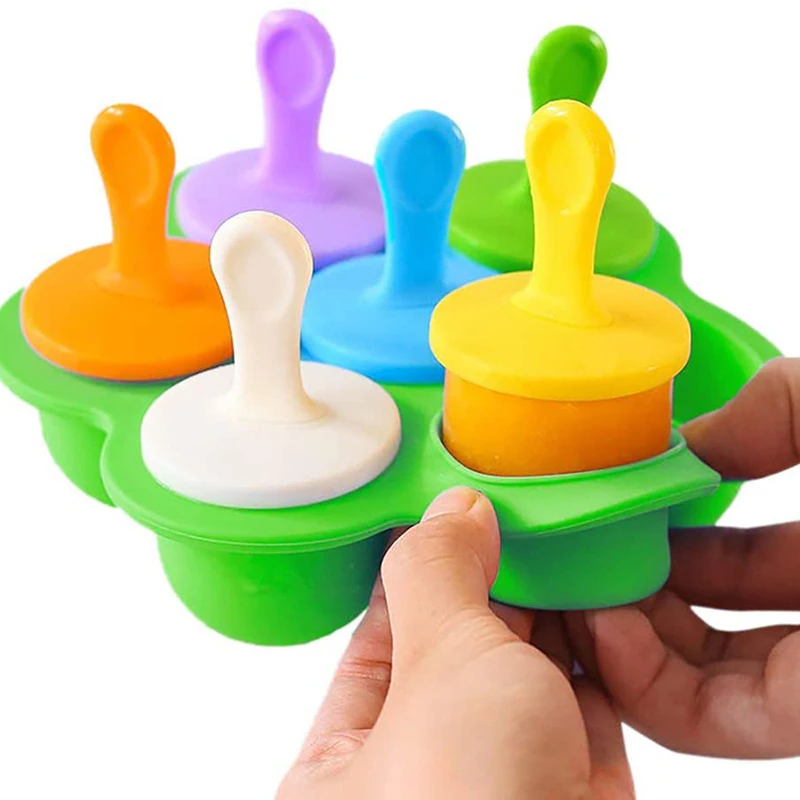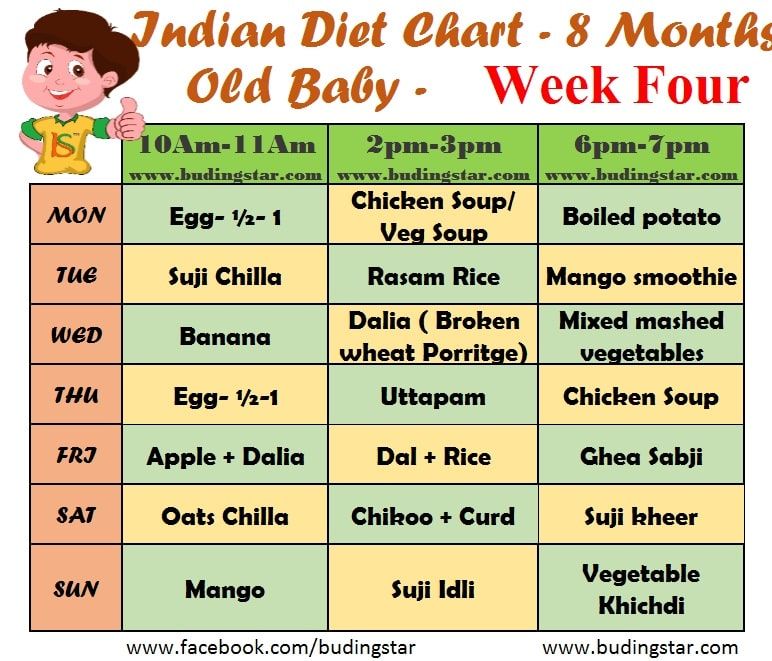Baby cries for more food
Do I Have a Hungry Baby, or Is Something Else Going On?
Your little one has three main jobs at the moment: eat, sleep, and poop/pee. After you bring baby home, it might seem like you’re on a constant cycle of feed, burp, and diaper change — because you are!
Babies grow and develop so much that they double their weight in the first 5 months of life. All this growing is exhausting and takes a lot of energy. Babies also need to feed every few hours or so because their tiny tummies can’t hold very much at a time.
Your baby will be hungry a lot of the time, but sometimes they might be squirmy or upset for other reasons. Here’s how to tell whether you need to feed your little angel again, or if they need something else.
In most cases, by the time your baby wails, they’ve been hungry for a while. Crying usually happens late into the hungry stage. Your baby may try to tell you they’re hungry in other ways first.
Signs and signals that your baby is hungry depend on how old (or new) your little one is.
Newborns and babies under the age of 6 months may tell you they need to be fed by:
- putting their hands in or near their mouth
- waving their hands toward their mouth
- turning their head toward mama’s breast (or anyone’s chest area)
- turning toward or looking at a bottle
- puckering or smacking their lips
- clenching their little hands (because they’re trying to not get upset with you for not taking the hint!)
Older babies and toddlers up to the age of two may be more expressive in their signs that they’re hungry:
- pointing at or reaching for food
- getting excited or loud when they see food
- opening their mouth when they see food or are offered some
- gesturing or making noises to let you know they’re hungry
Sometimes it might seem like your baby is hungry and asking to eat, but there’s actually another reason that your baby is giving you the hunger vibe. It’s easy to confuse hunger with the urge to suck.
Sucking is a reflex in the first 6 months of a baby’s life that helps them relax and self-soothe. It may even help your baby sleep better. In fact, a study including 104 babies found those who sucked on their fingers or a pacifier woke less at night and slept for longer periods — music to a parent’s ears!
Your baby may want to suck for the following reasons:
- Comfort. Some babies will want to breastfeed or bottle-feed even when they’re not hungry because they want to sleep or be held. Sucking helps them relax — plus they get your attention!
- Teething. If your baby is teething, sucking and chewing can sometimes help soothe tender gums. Your baby might seem like they want to feed just because sucking helps ease their pain and distracts them from teething frustrations.
- Acid reflux. Some babies with gastroesophageal reflux disease (GERD) may act hungry when they really want to suck to wash reflux back down.
 Overfeeding can make reflux worse, so if you suspect this may be the case, try a pacifier.
Overfeeding can make reflux worse, so if you suspect this may be the case, try a pacifier. - Anxiety. Anxiety in babies is as real as anxiety in children and adults. Some babies may pucker their lips like they’re sucking, squirm, or want to feed because they’re anxious. Both sucking and feeding help some babies calm down or feel more secure.
When your baby is hungry, they might exhibit behavioral cues or signals that are similar to those they show when they’re bored, agitated, sleepy, or upset.
You can help calm your little one by gently holding, rocking, or cuddling them. A baby massage can also help. If your baby makes sucking noises or likes to suck their fingers, give them a pacifier to suck on between feedings.
Help your baby calm down and stop fussing by helping them feel more secure and relaxed. You can try:
- using a soft, quiet voice and tone when you’re talking to your baby
- picking up and handling your baby slowly and gently
- holding your baby so that their arms and legs are tucked in close to their body
- avoiding overstimulation by being around too many people or too much activity at a time
- avoiding TV
- avoiding noisy areas, especially when baby is trying to sleep
- avoiding bright lights during sleep time
- avoiding waking your baby suddenly
- letting your baby sleep when they want to
- waiting until your baby wakes up on their own to feed or change them
Also, avoid “rewarding” your baby for any reason with milk or food. An unhealthy attachment to food can begin as early as when your little one is still a baby.
An unhealthy attachment to food can begin as early as when your little one is still a baby.
If your baby is teething, try putting a teething toy or soother into the refrigerator before offering it to them. Sucking and gnawing on something cold can help your little one.
If reflux is causing discomfort for your little one, try keeping your baby upright for 30 minutes after each feeding and offering a pacifier to soothe them.
Babies need to feed often because they have teeny tiny stomachs. A 4- to 5-week-old baby can only hold about 3 to 4 ounces of milk at a time. This is why babies are ravenous again only a little while after feeding. As babies grow, their stomachs also grow, enabling them to handle more milk.
It’s important to avoid overfeeding your baby. Giving your baby more milk than they can handle at a time won’t make them feel fuller longer. The extra milk will usually come out as vomit, making both of you more upset than when baby was just hangry.
If you’re breastfeeding, your baby will normally stop on their own when they’re full. Alternatively, they might continue latching on but only suck weakly. This is your cue to end the feeding session.
Alternatively, they might continue latching on but only suck weakly. This is your cue to end the feeding session.
If you’re bottle-feeding, its easier to overfeed because it’s natural to want your baby to finish their bottle if there is any formula left. Avoid this by following the general rule of thumb published by the American Academy of Pediatrics (AAP): On average, your baby should get 2.5 ounces of formula per day for every pound of body weight, up to 32 ounces.
You might be tempted to give your baby a few bites of solid food to fill their bottomless pit. Avoid starting your baby on any solid food before they’re 6 months old. The AAP recommends breastfeeding as the sole source of food until 6 months of age.
Trying to feed your baby solid food too early can lead to vomiting, an upset stomach, diarrhea, and even choking.
Even if your baby can stomach solid food, giving it to them too early can lead to overfeeding, weight issues, and other health problems during childhood and beyond.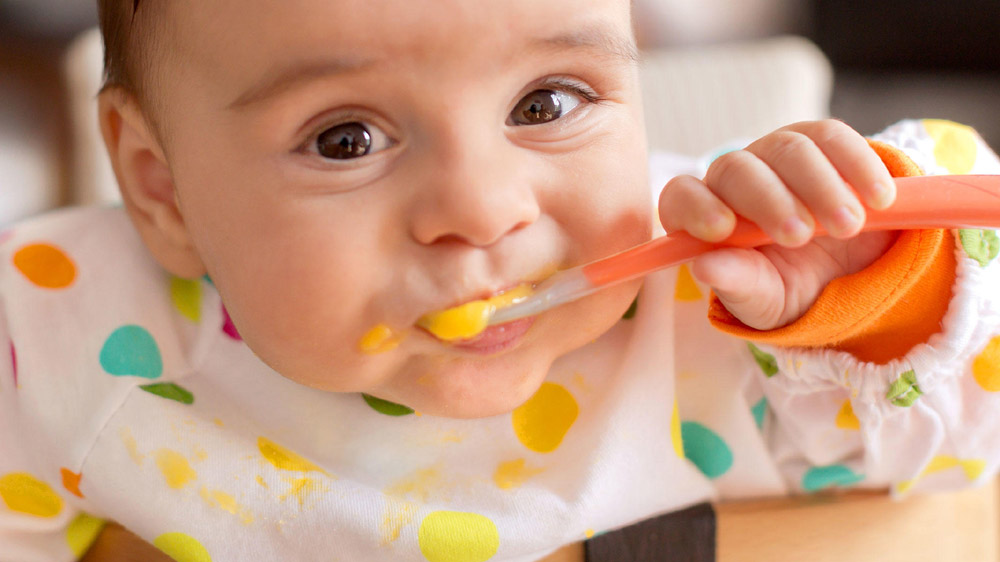
Once your baby does start eating solid foods, they’ll still need breastmilk or formula. One common saying is, “Food before one is just for fun.” Talk to your doctor about specific nutrition recommendations for your child.
Your baby will go through days or weeks of bigger than normal growth spurts during their first year. Like tiny teenagers, this is when they might be even more ravenous and want to feed more. This kind of feeding is called cluster feeding, and it’s completely normal.
True cluster feeding happens mostly in breastfed babies and helps signal mom’s body to increase milk production. Bottle-fed babies do not generally need to cluster feed.
Growth spurts in babies typically happen when they’re about 3 weeks, 6 weeks, 3 months, and 6 months old. During a growth spurt, your baby will likely cluster feed. This means they might want to feed longer and more frequently.
The time of day when they feel hungriest might also change. Your night owl might suddenly get hungrier and want several feeds in the evening, going on to sleep longer at night. This is welcome news for your sleep-deprived self!
This is welcome news for your sleep-deprived self!
Growth spurts and cluster feedings are different for every baby. They might last a few days or even weeks. You may have to breastfeed or bottle-feed every 30 minutes some days! Don’t worry, your baby will be back to their normal hunger levels once the growth spurt passes.
It may feel like your baby is hungry all the time, but they have a lot of growing and developing to get through in just a year. They also begin life with stomachs the size of an acorn!
However, sometimes your baby might seem like they want to feed when they actually want other kinds of attention from you. You know your baby best, and in time, you’ll learn to understand their cues.
Solutions for a Baby Who Cries for More, More, MORE!
We have had our fair share of whining and crying at the dinner table over the last few years. While most kids, it seems, tend to cry because they don’t want to eat what’s in front of them, our daughters cry because they want more food or we aren’t feeding them fast enough. It’s a dilemma that had me head-scratching at first, but now I know how to handle it much better. If you have a child who cries because they are just “starving” at mealtimes maybe you can benefit from the tips I will give you below.
It’s a dilemma that had me head-scratching at first, but now I know how to handle it much better. If you have a child who cries because they are just “starving” at mealtimes maybe you can benefit from the tips I will give you below.
© didesign / Dollar Photo Club
When our first daughter, Sofía, was about 13 months old, it seemed as if every single morning was the same story. She would wake up – sometimes happy, sometimes not – and we would sit her down for breakfast and then “WHHHAAAAAAAA!!” We started getting used to it because it happened so much, but it wasn’t something we ever looked forward to. Now we have a 16 month old, Bella, and she has been doing almost the same thing. It doesn’t happen quite as frequently as it did with Sofía, but it’s frustrating all the same.
In order to quell the crying at breakfast or any other meal, I have to be diligent. I’ve learned through experience some ways that can stop it mid-meal or prevent it from happening altogether. If I forget to do one or a few of these things, well, I just have to suffer through the crying. If my husband is there on a morning when the crying is especially terrible, he can get into a pretty bad mood. Hearing our kids cry can be a really awful way to start out the day!
If my husband is there on a morning when the crying is especially terrible, he can get into a pretty bad mood. Hearing our kids cry can be a really awful way to start out the day!
Let’s discuss some of the ways I have dealt with this bad habit:
Feed Your Child with the Family
If everyone eats at the same time, the baby won’t have to beg for food before or after she eats. Sometimes my girls will wake up while my husband is eating breakfast. If they come out to the kitchen and see him eating, they will most likely both start crying because they want food.
When Bella was much younger, I made the mistake many times of feeding her about an hour before dinner. Then dinner would roll around and she had already eaten so she watched us eat. She would then start getting irate and then cry because I wasn’t feeding her anything.
Let Your Child Feed Himself
Babies and toddlers want to exert their independence, and if you let them do that with their food, they will be much happier. I will often get a spoonful of dinner and give the spoon to Bella so she can put it in her own mouth. It works wonders when she is crying.
I will often get a spoonful of dinner and give the spoon to Bella so she can put it in her own mouth. It works wonders when she is crying.
If Bella is crying for food and I’m not giving it to her fast enough, I can often put the food in front of her and she’ll stop crying immediately because she starts concentrating on feeding herself.
Schedule Meal and Snack Times
This one may seem counterintuitive. The baby is crying for more food and, yet, you are making her wait until the next meal before she can eat again. I believe that a child can learn to be a little bit hungry in between meals. If she cries for more food only an hour after eating, for example, it’s because she hasn’t learned that hunger is quite alright. If you give in and she eats, she will cry for more food another hour later, and another hour later, etc…
Let Your Child Hold a Spoon
As soon as you give your child the last bite, give him a spoon or something to hold. More than likely, he will no longer cry for the food and will be more interested in the spoon. However, there have been various times when I’ve done this and my daughter would continue to cry. That indicates to me that she is still hungry and I will give her something else to eat.
However, there have been various times when I’ve done this and my daughter would continue to cry. That indicates to me that she is still hungry and I will give her something else to eat.
Distract Her When All the Food Is Gone
If I feel like my child has eaten enough, I will sing or quickly clean her up right after feeding her so she forgets that she wants more. I know that children should decide how much they eat, but when they want to eat more than I have eaten and I’m completely full, I just don’t buy that they need more food!
Put Finger Foods in Front of Him
Finger foods can keep a baby occupied and switch his concentration from the food to actually picking up the food. This is a great technique to try when your baby is first starting to eat finger foods. It might take some time for your baby to pick up each piece of food. This used to calm my girls down right away.
Put Her Back to Sleep
If your child wakes up too early in the morning or from a nap, you may know right away that she needs more sleep. But I’ve noticed in my own daughters that they often wait to show how tired they are until we sit them down at the table to eat. As the meal progresses you might notice your child rubbing her eyes or yawning. In this case, you might want to put her back to sleep but only if it is before her wake up time.
But I’ve noticed in my own daughters that they often wait to show how tired they are until we sit them down at the table to eat. As the meal progresses you might notice your child rubbing her eyes or yawning. In this case, you might want to put her back to sleep but only if it is before her wake up time.
Assume that It Could Be Teething
I’m terrible at guessing if it is teething or hunger. Bella sometimes will cry the entire meal and it won’t be until the end when I think, Oh, maybe she is teething. She gives me mixed signals and I think, okay, she wants more food, but then she cries as soon as I put the spoon in her mouth (probably because she bit it and her gums are super sensitive!). If your child is teething, just realize that he may refuse the food or he may act like he wants the food but then cries the whole time. Hey, Teething: you suck!
Feed Him Faster
I don’t recommend feeding your child faster unless you’ve basically tried most everything. You know your baby better than anyone else, though, so if you know nothing else will work this may have to be it.
You know your baby better than anyone else, though, so if you know nothing else will work this may have to be it.
My mother-in-law said that my husband’s brother was notorious for needing his food really fast at a young age. She and her husband would sit right by him, each armed with a spoon, and they would take turns giving him bites of food. If there was not a spoon in his mouth for even one second, he would burst out crying. This kind of behavior is something both of my girls went through as babies, but not quite to that extreme. It’s very stressful!
Quit Feeding Her Such Darn Good Food!
I bet you knew this one was coming. If you have a baby who wants more, more, and MORE, you may be dealing with a child who knows what good food is. You’re a great chef, so why wouldn’t your baby want more of that yumminess? 😉 Seriously, though, if you’re giving your baby healthy and delicious food, just deal with the crying. You’ll be grateful later when she becomes a world-renowned chef and owns a dozen restaurants. Ha!
Ha!
Whatever the reason, hopefully you can help your baby overcome the need to cry at mealtimes. In the case of my daughters, it has gotten much better for Sofía, but we’re still working on Bella. Just be patient and eventually the crying will die down!
What do you do to keep your hungry baby from crying through dinner?
- Author
- Recent Posts
Charlee Flaminio
I'm a mom of 3 on a journey to feed my family nourishing foods. Personally, I believe you can cook healthy food and still have time for your loved ones.
Latest posts by Charlee Flaminio (see all)
Euromed Clinic pediatric neurologist answers questions
A neurologist is one of the main specialists for children from birth. For the first time, your baby meets with a pediatric neurologist while still in the maternity hospital, then scheduled examinations by this doctor are carried out every month, at three, at half a year, at 9 months (if indicated), per year. We talked with the pediatric neurologist of EuroMed Clinic Natalia Petrovna Isaenko about why a child is shown to a specialist so often, what are the most common neurological diseases in babies, and what needs to be done to ensure that your child grows up healthy and calm.
We talked with the pediatric neurologist of EuroMed Clinic Natalia Petrovna Isaenko about why a child is shown to a specialist so often, what are the most common neurological diseases in babies, and what needs to be done to ensure that your child grows up healthy and calm.
— Natalya Petrovna, what does a neurologist pay attention to during routine examinations of babies?
- First of all, the neurologist reveals gross congenital anomalies. Next, we look at how the pre-speech, motor, emotional development of the child goes.
In each age period, the child should have certain skills. Parents, unlike a neurologist, most often cannot objectively assess how the development of their child fits into age norms.
- But after all, all children are different, and their development may not correspond to the tables and the established framework?
— Yes, it happens. Here it is necessary to approach very individually. Indeed, despite the fact that we are guided by existing norms, we have certain tables, painted schemes of what a child should do at what age, there is a possibility of deviations from them, and this is not scary. Some child may begin to perform certain actions a little earlier, some - a little later. Much depends on the conditions in which the child lives, what parents do in relation to the child, etc.
Some child may begin to perform certain actions a little earlier, some - a little later. Much depends on the conditions in which the child lives, what parents do in relation to the child, etc.
But that is why it is important to consult a neurologist in order to professionally assess whether the child is developing normally or there are frightening moments that may indicate certain health problems.
Is it normal for a small child to cry often?
- Recently, it is believed that a healthy child, when he is full, who has enough day and night sleep, should not cry. If the child cries often and for no reason, then there is a problem. These can be headaches, neck problems (subluxations, infringement), neurological problems. In the first months of life - problems with the gastrointestinal tract: colic, increased gas formation, etc. In connection with this, there may be crying during meals, refusal of the breast, of the bottle. During eating, intestinal motility increases, and therefore the child experiences discomfort.
Young children are usually very weather dependent and react to the weather - this can also be a reason for crying.
It seems to me that many children cry because they are bored, they require parental attention so much. Now there is a psychological acceleration in children and, accordingly, they need more attention. This is usually clearly visible. Many parents themselves provoke this fixation: the child began to cry, the mother took him in her arms, shook him, put him to her chest. Of course, the baby in his mother's arms and, moreover, at the breast is fine, and he will repeat crying, demanding repetition. It is not necessary to apply it to the chest every time the child has cried. It is better to try to switch: distract, rattle a rattle, stroke ...
Another reason for crying is overwork. Parents often do not believe that the baby can overwork, they do not understand why. Babies have an immature nervous system, plus they receive a huge amount of new information and impressions every day - for them, everything in the world is new and unfamiliar! Therefore, a good sleep is so important, when the child can take a break from impressions.
If the child screams before going to bed, sleeps little, nervously, often wakes up, it is necessary to move the mode, improve sleep, monitor the quality of sleep.
- When we talk about a full sleep, what do we mean, how should a child sleep?
- For very young children, the norm is to sleep for at least an hour and a half on daytime sleep, six hours in a row - at night. During the adaptation period, in the first months of life, the baby may wake up at night more often, but still, the intervals should be at least 3 hours. Sleeping for 30-40 minutes is not enough, the child does not have enough time to rest. Here such a moment is important: the phase of sleep in a child is just these 30-40 minutes. But the child must be able to move from phase to phase independently. What happens in practice? The child was brought in, opened his eyes, his mother immediately takes him in her arms, begins to feed him. He gets used to it and no longer falls asleep on his own.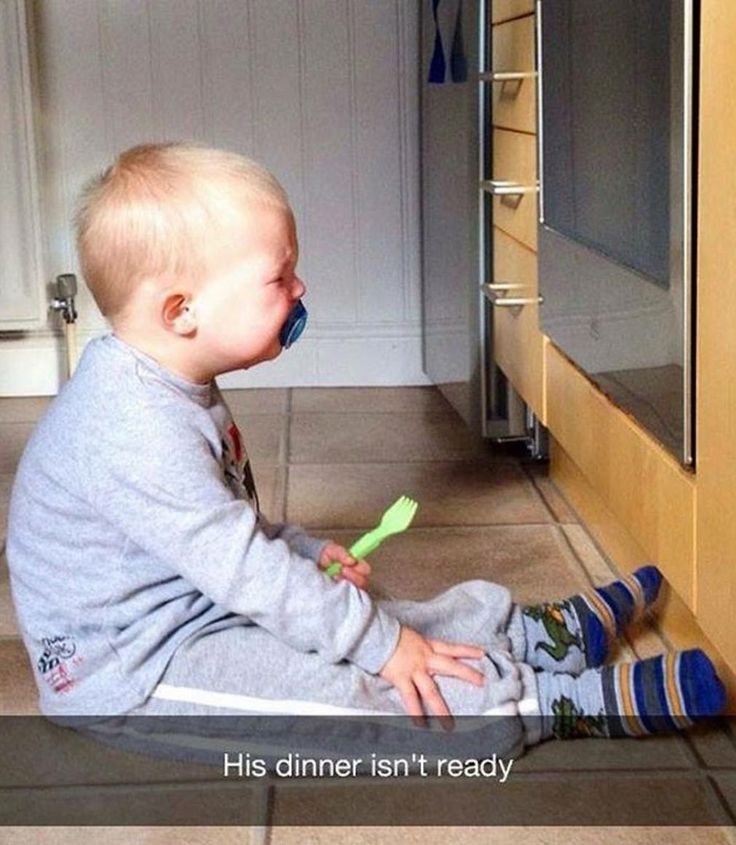 Therefore, it is important to teach the child to move from phase to phase without waking up: do not touch him if he wakes up, do not disturb him; if he cried, was capricious - pump him up, stroke him, but try so that the child continues to sleep without a break for food.
Therefore, it is important to teach the child to move from phase to phase without waking up: do not touch him if he wakes up, do not disturb him; if he cried, was capricious - pump him up, stroke him, but try so that the child continues to sleep without a break for food.
Older children who sleep once a day should have 2-3 hours of naps during the day. If you sleep more, that's good.
To improve sleep, the regime is important. I recommend directly writing down in a notebook (or in an application on a smartphone) how much the child sleeps, the time when he fell asleep and woke up, when he screams before going to bed, what his mood is after sleep ... So we can track the quantity and quality of sleep. Look at what days the child slept well, fell asleep easily - and focus on the daily routine.
- One of the most common diagnoses that many children are given in the hospital is "neurogenic torticollis." How serious is this problem?
- Neurogenic torticollis - asymmetry of muscle tone. A child is often born with asymmetric muscle tone. A small child does not yet have voluntary movements, they are chaotic. And at the moment of relaxation, sleep, the child is drawn to where the tone is increased. That is, the child lies with a certain turn of the head. If you do not deal with this problem, do not correct it, there is a deformation of the neck and skull. The child constantly looks in one direction, lies on one side, as a result, the head flattens, its shape changes.
A child is often born with asymmetric muscle tone. A small child does not yet have voluntary movements, they are chaotic. And at the moment of relaxation, sleep, the child is drawn to where the tone is increased. That is, the child lies with a certain turn of the head. If you do not deal with this problem, do not correct it, there is a deformation of the neck and skull. The child constantly looks in one direction, lies on one side, as a result, the head flattens, its shape changes.
You can work with this, the main thing is to do it. What is being done to correct torticollis and its consequences? We change position, we shift the child so that he lies on different sides alternately, and not on one, on his back. Lay on the stomach. Also, therapeutic exercises, massage, swimming pool are recommended for the correction of torticollis.
Torticollis returns to normal between 3 and 6 months of a child's life. During this period, the child becomes more active, turns his head, arms, begins to roll over, tries to crawl, sit down.
It is important not to confuse neurogenic torticollis, which is treated by neurologists, with congenital muscular torticollis, a gross pathology treated by orthopedic doctors.
Is headaches in children a reason to visit a neurologist?
Yes, definitely. Children under 5-6 years of age should not have headaches - they are not yet ripe for this. In young children, headaches can be caused by somatic causes: parasitosis, anemia, allergies, some problems from the gastrointestinal tract ...
In older children, headaches can be triggered by problems with the spine of the neck. In the pubertal period, various autonomic dysfunctions are often encountered. This is a common problem in teenagers.
In any case, it is necessary to be examined. There is a good chance that we will not find anything, and the headaches will eventually go away on their own. But it can be a symptom of some serious diseases that should not be left to chance.
Is nocturnal enuresis (urinary incontinence) common? When do we talk about this diagnosis?
Yes, this is also a common disease. As a diagnosis, enuresis is made after 3-4 years.
As a diagnosis, enuresis is made after 3-4 years.
If we talk about the norms in development, by the age of one and a half years the child should learn not to urinate at night. A modern child spends some time in disposable diapers. Then they are removed. The first time of the night will be "wet". But by the age of two, “dry nights” should already be formed.
After that, some time passes - and the child begins to urinate again at night, say, at 4 years old. This is secondary enuresis.
If the diaper is removed, and the child continues to urinate at night, this is primary enuresis.
There are many reasons for enuresis: these are infectious diseases, malformations, dysfunction of the genitourinary system, immaturity of the nervous system, stress, neurosis, etc. In any case, this problem cannot be ignored, but you need to contact a neurologist as soon as possible for correction this disease.
- Young children have convulsions when the temperature rises. How dangerous is it?
How dangerous is it?
Febrile convulsions (that is, convulsions with an increase in body temperature) is a paradoxical reaction of the nervous system, the cerebral cortex to such an irritant as high temperature. Against this background, there is a splash. Febrile seizures may occur only once, or they may recur with each episode of fever. Most often, they occur in emotional and active children. Special treatment is not required, the main thing is not to allow the body temperature to rise above 37.5 ° C, to bring it down immediately with antipyretic drugs so that episodes of convulsions do not recur. If necessary, the neurologist will recommend sedatives. Such children are observed by a neurologist, it is recommended to see a doctor every six months.
- Can't febrile convulsions be a sign of incipient epilepsy?
As a rule, febrile convulsions do not have a way out into epilepsy. There are isolated cases when convulsions can really be the debut of epilepsy. Therefore, in any case, it is necessary to show the child to a neurologist so that the doctor can see in which direction it develops.
Therefore, in any case, it is necessary to show the child to a neurologist so that the doctor can see in which direction it develops.
Is epilepsy generally common?
Yes, epilepsy is a common disease. We, in Novosibirsk, even have a special center where epileptologists work - this is a very narrow specialization in neurology. When we confirm epilepsy in a child, I usually refer the patient to an observation center. So there they will be able to help the baby as efficiently as possible, correctly select the drugs and prescribe the correct treatment.
What symptoms should parents pay attention to in order not to miss the onset of epilepsy in a child?
- As a rule, when an attack occurs, it is clearly visible. The child has convulsive twitches, the corner of the mouth twitches, the muscles may pull, saliva flows, foam may come from the mouth, he may urinate. But it happens that a child simply freezes during an attack, and, for example, rubs his hands or makes chewing movements for some time. And then everything passes. After an attack, headache, nausea, impaired coordination and speech can be observed.
And then everything passes. After an attack, headache, nausea, impaired coordination and speech can be observed.
Sometimes the first signs of epilepsy appear even before the attack. For example, a child twitches while sleeping. Or he simply changes his usual behavior, becomes obsessive, whiny, asks the same questions in a circle, etc. This is due to the neurological changes that occur with epilepsy.
Thus, if you notice changes in the child's behavior, he behaves unusually, strangely, be sure to show the child to a neurologist!
If possible, I recommend filming the attack on video - it will be much easier for the doctor to understand what is happening with the child.
- Are there sedatives that can be given to children?
- Hardly ever. Available drugs can be prescribed and given only in hospitals. This is not practiced in outpatient treatment in neurological pediatrics.
With increased excitability and emotionality of the child, I usually suggest starting from afar - to establish a daily routine, give the child the opportunity to actively move and fully relax, walk in the fresh air, etc.
All drugs (vascular, nootropics, etc.) are prescribed strictly according to indications and cannot be taken without a doctor's recommendation. The consequences of uncontrolled medication may be neurological and behavioral problems in the future: hyperactivity, disinhibition, restlessness, attention deficit hyperactivity disorder (ADHD).
How common is attention deficit hyperactivity disorder (ADHD) in children?
Now this diagnosis is made very often. Although, it seems to me, we often attribute to ADHD what it is not: the characteristics of the temperament and character of the child, his activity or even pedagogical neglect ...
There are many pathological hyperactivity, but there are still more stories with problems in the family and in the interaction of parents with the child.
— Another common disease is nervous tics. How are they treated?
Yes, tics are very common. We treat both with medication, and - most importantly - with the normalization of the regimen. For a "ticking" child, a good sleep, rest, minimizing the TV, phone, computer is very important. It is very useful to send such children to sports clubs. As a rule, children suffering from a nervous tic are very emotional, temperamental, read a lot and sit at the computer. They are emotionally and informationally overloaded. And the nervous system relieves tension, manifesting itself in tics.
For a "ticking" child, a good sleep, rest, minimizing the TV, phone, computer is very important. It is very useful to send such children to sports clubs. As a rule, children suffering from a nervous tic are very emotional, temperamental, read a lot and sit at the computer. They are emotionally and informationally overloaded. And the nervous system relieves tension, manifesting itself in tics.
— Speaking of information overload, how do you feel about early development, which is so popular now?
- Badly. Any neurologist, I think, will agree with me. If a child is given a load that is inadequate for his age and development, this can result in quite serious problems in the future, up to psychiatric disorders. A child does not need all this early reading from two years old, English from three and mathematics from five. The child should calmly explore the world, it is important to stimulate his cognitive activity, but do not stuff him with a huge amount of knowledge beyond his age.
— What are the examinations for the diagnosis of neurological diseases?
- Electroencephalogram (EEG). Invented and created to record epi-activity - to confirm or exclude epilepsy, this is the main focus of this examination.
I also refer children with speech and mental disorders to the EEG to see how all cortical rhythms are formed - by age or not. This is corrected by age, over time. Classes with neuropsychologists, defectologists, the Tomatis method (a program for neuro-sensory stimulation) also help.
Magnetic resonance imaging (MRI). This is one of the most informative surveys.
Be sure to send for an MRI to understand the cause of headaches, especially if the child complains of a headache when moving, when he starts to jump, run, move actively.
Also, MRI is informative in epilepsy, the attacks of which are not treatable. Then we look at the MRI to see if there is a vascular malformation (deviation from normal development) or another vascular defect. This can cause seizures, and the problem is solved surgically. As a rule, after the operation, the seizures in the child stop.
This can cause seizures, and the problem is solved surgically. As a rule, after the operation, the seizures in the child stop.
MRI allows you to see the structure of the brain and blood vessels, assess the state of the structure, the presence of cysts, etc.
Computed tomography (CT). Typically, a CT scan is ordered after an injury to look for blood in the injured area.
Ultrasound of the vessels of the neck. Headaches, disinhibition, attention deficit, speech delays can be caused by impaired blood flow through the vessels. Ultrasound allows you to diagnose this, as well as to see anatomical defects (C-shaped, S-shaped course of vessels), anatomically incorrectly formed vessels, improper discharge of vessels into the spinal column, vasoconstriction.
Neurosonography (NSG) - ultrasound of the brain. It is mandatory recommended as a screening (preventive examination) for all newborns. The NSG shows the structures of the brain, how all spheres are formed, the cavity system, ventricles, grooves, the presence of fluid. In parallel with NSG, dopplerometry is performed - we look at the blood flow of the vessels.
In parallel with NSG, dopplerometry is performed - we look at the blood flow of the vessels.
NSG is performed in the maternity hospital for children after complicated childbirth, in a month NSG is prescribed to absolutely everyone. NSG can show gross violations that need to be corrected as early as possible in order to minimize their impact on the development of the baby. In the first months of life, many developmental anomalies do not appear, until about 3-4 months they are well compensated, and then the child begins to lag behind in motor and mental development. That is why NSG must be performed without fail, even if outwardly the child looks absolutely normal.
Services
Neurologist's consultation Consultation with a pediatric neurologistCry it out method of falling asleep: controlled crying and sleep
April 24 2019
26 comments
Some people believe that this method of sleep training involves the following algorithm: parents leave the nursery, leave the baby alone, and he cries until he falls asleep.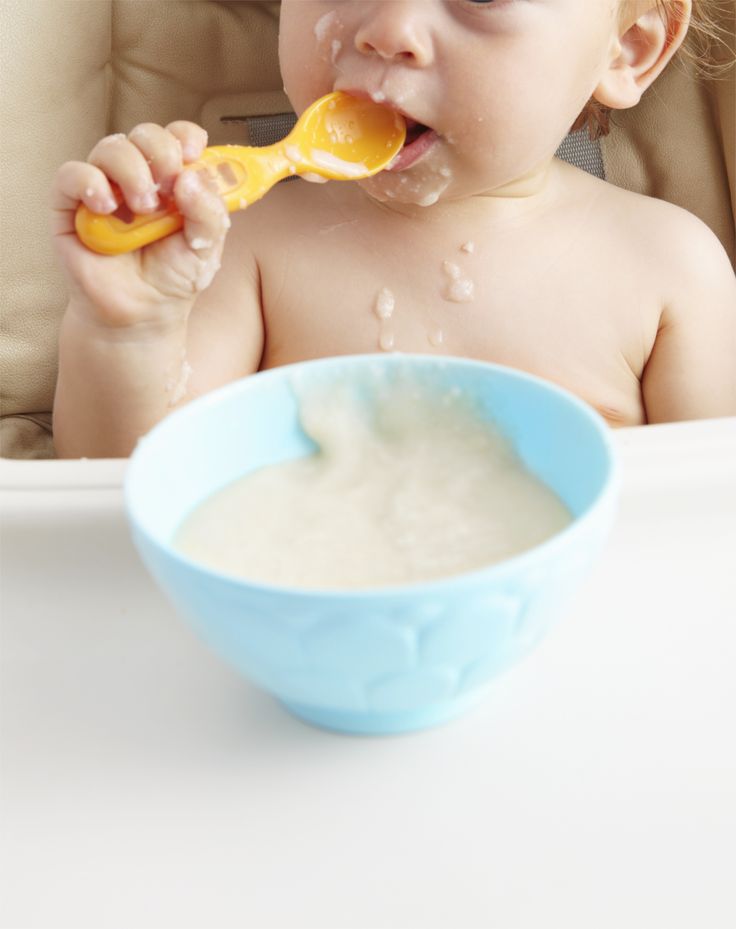 But "cry it out" (CIO) refers to many approaches to sleep training. And most often it is based on the fact that parents allow the child to cry for a certain period of time (usually this is a very short period).
But "cry it out" (CIO) refers to many approaches to sleep training. And most often it is based on the fact that parents allow the child to cry for a certain period of time (usually this is a very short period).
Richard Ferber / photo WBUR
In his book A Child's Dream. The solution to all problems, pediatrician Richard Ferber introduced one of the methods for falling asleep to children, which has become almost synonymous with CIO. He was even given a name by the name of the doctor - Ferberizing. Ferber himself never uses the phrase "cry it out". He's just one of many sleep experts who say crying is an essential part of sleep training for some kids. Most pediatricians agree with him, and the cry it out method really works, helping many families.
Theoretical foundation of the methodology
The basis of CIO is the ability to fall asleep, which your child can learn if you give him the opportunity to do so. The idea is that if your baby gets used to you feeding or rocking him every night before bed, he won't learn to fall asleep on his own.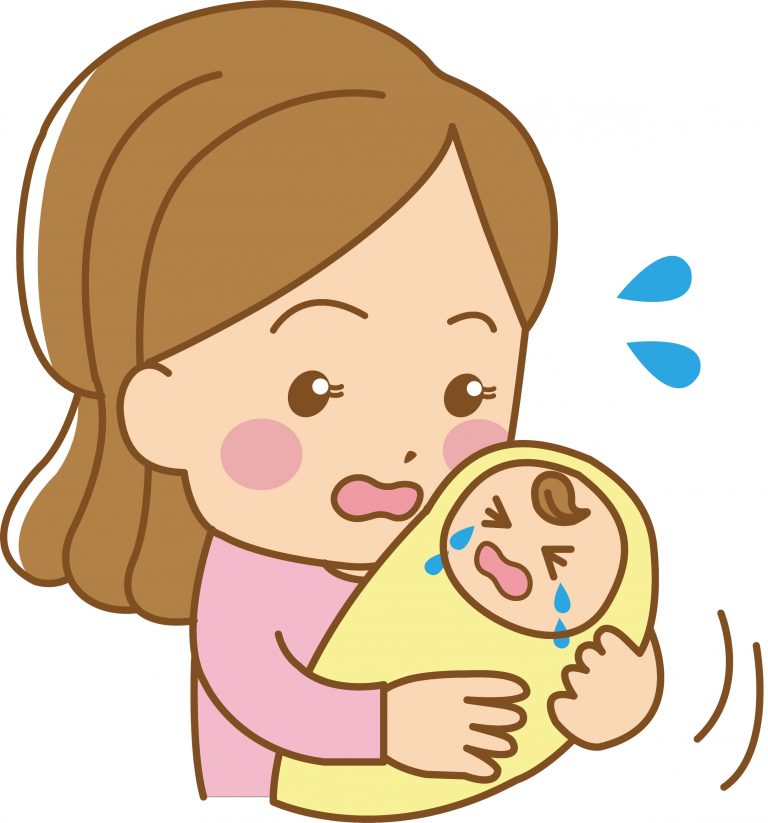 And subsequently, when he wakes up at night, which is part of the natural sleep cycle, he will worry and cry instead of falling asleep again.
And subsequently, when he wakes up at night, which is part of the natural sleep cycle, he will worry and cry instead of falling asleep again.
Conversely, if your baby learns to soothe himself before bed, he will be able to use the same skill when waking up at night.
It is important to realize right away that crying is not the goal of this sleep training method. However, "cry it out" proponents argue that this is often an inevitable side effect of self-tuning to a child's sleep. In fact, a short-term roar is a small price to pay for all the long-term benefits: a child who goes to bed with a happy smile on his face and falls asleep easily; parents who are guaranteed a quiet night's rest. How do you like this scenario? Do you only dream of peace? Well, you have a chance to change everything.
It is much easier to take a child to bed / photo The Pragmatic Parent
Examples of CIO methods
Ferber is perhaps the best-known expert to advocate the "cry it out" method, but he is not alone. Pediatrician Mark Weissbluth, author of the popular book Healthy Sleep, Happy Baby, says that crying is an integral part of helping some kids develop healthy sleep habits.
Pediatrician Mark Weissbluth, author of the popular book Healthy Sleep, Happy Baby, says that crying is an integral part of helping some kids develop healthy sleep habits.
Sleep expert Jody Mindell, who wrote the book Sleeping All Night, is called "the kind and gentle Ferber." She proposed her own variation of the technique.
Another paediatrician, Michel Cohen of New York, should not miss The New Foundations of Parenting. He believes that babies as young as 8 weeks old can be left alone in the nursery to cry as much as necessary before falling asleep.
Well, what mom can resist that? / photo Sleeping Baby Book
At the opposite end of the spectrum is the “baby wise” approach of pediatrician Robert Bucknam and his coauthor Gary Ezzo. In their book Wisdom in Raising a Child, they advise not to feed children when they themselves want to. They recommend force-feeding your baby before bed so that he does not wake up at night. In addition, the authors warn that children will definitely cry until they adjust to the schedule proposed by their parents.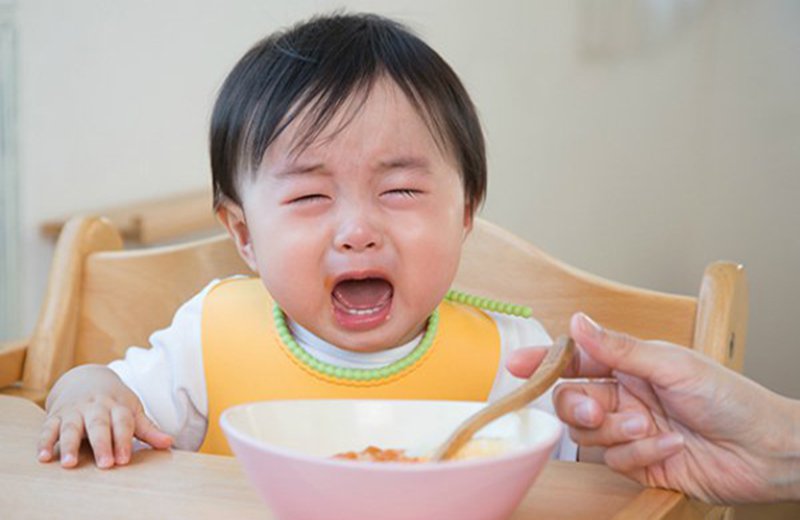
It should be noted that the methods proposed by Michel Cohen and Robert Bucknam are controversial and have been criticized by both childcare experts and many parents. Also, these approaches are contrary to the recommendations of the American Academy of Pediatrics on feeding and sleep. But... There is always a "but".
I wanted to try the Ferber method. How should I do it?
First, wait until your child is ready to sleep through the night, not only physically but also emotionally. Babies usually mature at 4-6 months of age. Ferber does not specify the exact age at which to start applying his technique, since it can vary greatly depending on the individual characteristics of the child. So it's up to you to decide.
The result is worth all your efforts / photo Sleepopolis
If you are not sure if your child is ready, you can always take a “test swim” or discuss it with a doctor. If you encounter a lot of resistance, wait a few weeks and try again.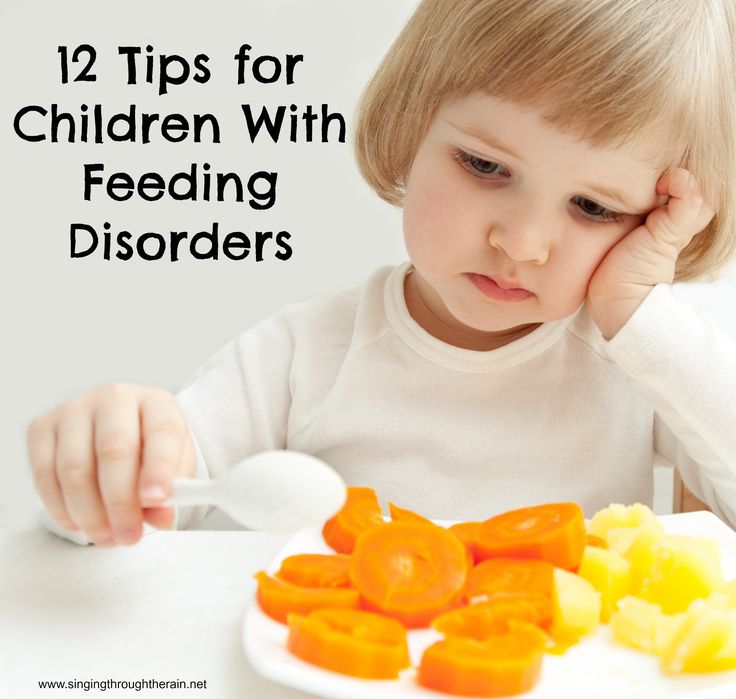
Step 1. Put your baby to bed when he is sleepy but still awake.
Step 2 Say good night to your baby and leave the room. Let the baby cry for a certain period of time.
Step 3. Return to the room for 1-2 minutes to pet and soothe the baby. Do not turn on the light while doing this. Your voice should be as quiet and soothing as possible. Exit the room again. Despite the fact that he is still awake and even crying.
Step 4. Return to the nursery again and stay with the child a little longer than the first time. Repeat this "exercise", each time leaving the room for a longer time. At the same time, staying in the nursery should not be delayed longer than 2 minutes.
Step 5. Leave the room until the baby is asleep.
Step 6. If your child wakes up again, follow the same procedure, gradually increasing the intervals between visits.
Step 7. Every night, increase the time intervals between visits to the nursery. Ferber claims that in most cases, the child will fall asleep in his room on his own by the third or fourth night. The maximum period is a week.
The maximum period is a week.
How long should a child be left alone in a room?
Ferber suggests the following intervals in his book:
First night: first time out for 3 minutes, second time out for 5 minutes, third time and all subsequent times out for 10 minutes.
Second night: leave the child for 5 minutes, then 10 minutes, then 12 minutes.
Subsequent nights: gradually increase the intervals, taking into account the reaction of the child.
A child must love his bed / photo Kveller
Practical tips for testing the “cry it out” method from parents and experts
Lay the foundation for success. For example, getting ready for bed might include bathing, reading a book, or a lullaby. The child will know exactly what to expect.
Develop a plan. Make sure you and your partner are emotionally prepared before starting sleep training.
Follow the plan. When your child wakes you up at 2 am, you may be tempted to go astray.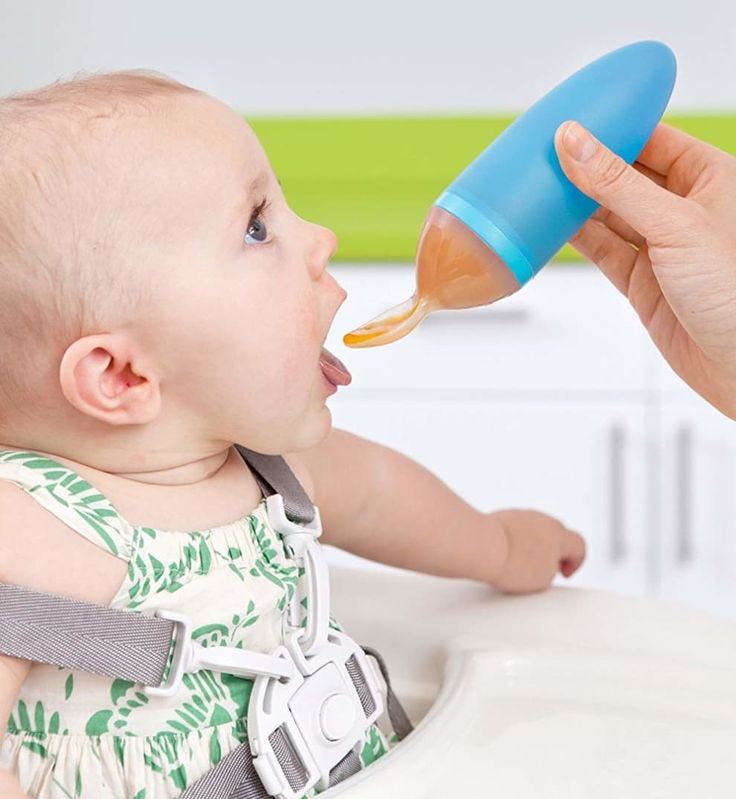 But in this case, all the work will be done in vain. You can pause the program if you find that your child is simply not physically or emotionally ready.
But in this case, all the work will be done in vain. You can pause the program if you find that your child is simply not physically or emotionally ready.
Get ready for sleepless nights. Schedule your first CIO night when you're not planning anything. For example, if you work all week, it's best to start on Friday.
Be prepared for remorse. What parent can calmly listen to his child crying? This is real flour. Therefore, during periods of waiting, when you leave the nursery, and the child begins to cry, go to another part of the apartment or listen to music on headphones. The first week may seem like hell for you, but try to relax, because when it's over, your family will sleep as soundly as it is peaceful.
Only team work. During waiting periods, do something nice with your partner. Come up with something yourself. If after a while you realize that the baby's crying is unbearable, let your partner take control of everything. Next time you will take over the case, giving your spouse a rest.
Customize the method for you. If you want to try this method but find it too harsh, you can take the gentle approach. For example, you can stretch the seven-day Ferber program over 14 days, increasing the time intervals through the night.
Be prepared for relapses. Don't think that by the end of your sleep training you will solve the problem. Your child's sleep may regress periodically, for example, when they get sick or while traveling.
Reading at night as part of getting ready for bed / photo Chicago Tribune
Does the "cry it out" method work?
For some, this method is just a salvation, because it works the first time. Many parents say that the child continues to cry, but the promised sleep does not come. Then it's time to try something else. It is natural that one method works differently in different families. No one approach to the problem of children's sleep will work the same way for everyone. And even if CIO works with your first child, it won't work with your second.
Parent feedback
"I have two children. The first child never screamed, because before going to bed and during awakenings, we always lulled him, sang, did our best. But with my second child, I decided to try the controlled crying method, and after a night it worked. Today my daughter is a year old, she goes to bed without any problems and never cries at night. My husband was against it, but now our family is happy.” - Lisa.
“My daughter woke up every hour and when she was 7 months old I decided to let her cry. After 3-4 weeks, we completed the sleep training. Now my daughter sleeps about 10 hours a night and loves her crib. And how much energy does she have for games after that! — Samantha.
"My friends are Ferber junkies." They recommended the "cry it out" method to me, and I went against my own instincts. The son was supposed to sleep peacefully in a week, but instead he cried for 3 hours on the third night. This is very individual, and you should not expect that this technique works with all children. — Kelly.
— Kelly.
“We tried the Ferber method with our daughter at 6 months old. The first night was terrible. The second one was faster. The third night was worse than the first. Now the daughter sleeps with us and we are all happy. I still blame myself for those three terrible nights.” - Loving mother.
Don't believe anyone who says it's easy / photo HuffPost
Why do some people oppose the "cry it out" method?
Many parents and educators say that you should not let a child cry and not respond to his tears in any way. According to them, this can jeopardize the child's trust in his parents and, therefore, his sense of security.
In response to such fears, Ferber says that a child who receives a lot of attention and love during the day can stay on his own at night and cry a little without damage to health or psyche.
“A small child does not yet know what is best for him, and he may cry if he does not get what he wants,” writes Ferber. “If he wanted to play with a sharp knife, you would naturally not give him such a dangerous “toy”, no matter how much he cried. In doing so, you would not feel guilty and would not worry about the psychological consequences. An abnormal sleep pattern can be as harmful to your child as a sharp knife.”
“If he wanted to play with a sharp knife, you would naturally not give him such a dangerous “toy”, no matter how much he cried. In doing so, you would not feel guilty and would not worry about the psychological consequences. An abnormal sleep pattern can be as harmful to your child as a sharp knife.”
The mere mention of the "cry it out" method can cause heated debate between parents, pediatricians and psychologists. Critics of the method say it can lead to digestive problems and even damage to synapses in the brain. Adherents speak of the ridiculousness of such conclusions. Craig Canapari, M.D., associate professor of pediatrics and director of the sleep medicine program at Yale School of Medicine, laughs: “Honestly, this technique would be really dangerous if babies got brain damage every time they cry. They're crying all the time. I think "cry it out" has a right to exist."
In the end, it is up to you to decide whether this method is justified for your child. In the struggle for survival, all means are good. And if sleep is pleasure, then you have to pay for any pleasure. Someday you will definitely understand that sleep is a plane in which you can always fly business class.
In the struggle for survival, all means are good. And if sleep is pleasure, then you have to pay for any pleasure. Someday you will definitely understand that sleep is a plane in which you can always fly business class.
Author http://www.twins.org.ua
Share
Share
Share
I am against this method. It is not in Nature for a mother to make her child suffer! It hurts both the mother and the child.
Do you want your child to fall asleep faster? Develop a specific sleep scenario. For some children, it is even enough to eat, then listen to a lullaby on the phone!
I think that you have children who cannot fall asleep for 1.5 hours, they simply do not have a script for falling asleep. It works already at the level of instincts!!
I turn on the same music to the child, and it already acts on the level of instincts.
Reply
I am teaching my second child (1. 2 years old) using this method. Helped right away! From 4 a.m. he sleeps all night without waking up. From 21-8 in the morning. Happiness has no limit. Today is day 11. Somehow there was a strong cry, but fell asleep in one approach. The first night is hard. It worked for me with both daughters, but I am convinced that children are different. Good luck to all!
2 years old) using this method. Helped right away! From 4 a.m. he sleeps all night without waking up. From 21-8 in the morning. Happiness has no limit. Today is day 11. Somehow there was a strong cry, but fell asleep in one approach. The first night is hard. It worked for me with both daughters, but I am convinced that children are different. Good luck to all!
Reply
What a terrible technique! A child under 3 years old definitely needs his mother's warmth, hugs, affection!
Reply
Good evening, we tried this method one evening, the child never yelled like with this method. Moreover, we still depend on the breast. How can you think of that.
Reply
Children falling asleep using this technique, Welcome to IT.
Reply
Child abuse? And you have twins and jump with them 24/7.
This will be a mockery of the parents. Even in two with his wife, put them down for 1.5 hours in the evening, then if they wake up at night for 2 hours, they still jump and during the day another 0.5-1 hour. A shameful waste of time.
Basically two camps of commentators.
1 camp, of course, the method is supported and, of course, only enthusiastic comments are left.
Camp 2 has gone all out and basically puts pressure on a few aspects.
- violation of communication - trust between the child and the parent.
That is, commentators offer to indulge all the whims of their child and take a little something in their hands and calm them down. Well, we have gone through all the stages of this indulgence. From simple words to hands.
In the end, the child (one more attached to his wife, one to me) who is more attached to me simply refused to go to bed at 1.5 years old. And if you put him in bed with a demand, he yells to be picked up. REQUEST! and only with your favorite blanket and nothing else. It is simply impossible to put in a bed, a terrible hysteria begins.
That is, the child has reached the state of manipulation of the parent.
The second child behaves in a simpler way, but in general, in relation to his wife, the same way. It is possible to lay down only after long motion sickness on the hands. My blood, which is attached to me, can only be laid in a deep sleep. It's about an hour on hand.
- the second point that is being actively discussed is tantrums, fainting due to hysterics, mental disorders.
Your mother. Your child can hysteria and cry from anything. From colic at an early age to a thorn in the foot on the beach. Will you wipe your child's drool every time?
I was a mother's boy myself. And until the age of 25, he remained like that, stealing money from his father, and his mother bought cigarettes, fed and clothed him. Until one day he found himself in conditions of survival without papa and mama. After that, the world turned upside down. Now I am a financially secure person, absolutely independent and independent of any circumstances.
And until the age of 25, he remained like that, stealing money from his father, and his mother bought cigarettes, fed and clothed him. Until one day he found himself in conditions of survival without papa and mama. After that, the world turned upside down. Now I am a financially secure person, absolutely independent and independent of any circumstances.
I have a wonderful wife and two wonderful children.
What future do you want for your children? That's the way I was before 25 and would probably be the same up to 50? Or maybe you want your children to be independent from an early age and not rush a little on your neck, a little something goes wrong?
The method is stupid, but it works. Stress is really useless for a child, but you don’t torment him week after week. We are talking about 1-3 days of real stress for the child.
We applied this method abruptly and without returning to the room.
1.5 hours we tried to put them down. Then he and his wife defiantly left the room and that was it. Yelled for 30 minutes. Then they slashed.
Yelled for 30 minutes. Then they slashed.
Yes, the first evening and daytime falling asleep was hard for them.
But each subsequent day they calmed down much faster and already without tantrums, but only with whining. And sleep became stronger and better.
After 3 days of literally this method, children already after 30 minutes sleep a sound and healthy sleep.
I would like to note that our children sleep quite well at night. We spend a lot of time with our children throughout the day. So they are not deprived of attention. At night, if we wake up, we are still rocking in our arms or in the crib if we quickly reacted to whims.
An independent child really learns to control his emotions on his own, falling asleep and healthy sleep for a child is a real necessity.
So to sacrifice 2 days of hard stress and get a child falling asleep on his own or babysitting him for at least 5-6 years is the choice of everyone.
But do not be surprised after 40 years that your child asks for money for a bottle while sitting at the computer and playing toys or sitting in VKontakte. The fault of such upbringing will be only you.
The fault of such upbringing will be only you.
I think for the most part those who have babies of 3-12 months are aroused. The parent of such a baby is hysterical and crying like a knife to the heart. But it passes, believe me. He himself was the same. And I have two of the same age. In my case, if humane methods do not work, I have to resort to radical ones.
Sooner or later you will realize that this is not a way to jump for 5 hours with a baby. It's about 3-4 days, not months.
Reply
Here you are, adults, you somehow sleep in silence and in the dark and in a separate room and no one is sitting next to you ... so why not teach this to a child???
From this, strong personalities are formed and not amoebic little men who spit on everyone and mom runs after them and wipes this drool and apologizes ...
This is normal, you need to teach the child independence - but explain, help, talk. As the doctor writes - “let them cry and come ... make it clear that mom will come anyway, and let them cry again and come and the baby will understand that he is not alone and you can sleep peacefully”
As the doctor writes - “let them cry and come ... make it clear that mom will come anyway, and let them cry again and come and the baby will understand that he is not alone and you can sleep peacefully”
All such straight mothers mothers - give free rein to your children, and they will be calm and happy))
Reply
My daughter is 30 years old and is now the mother of a 3 month old daughter. I did not know any methods, but I really needed to go to work in the 90s. At 6 months old, I tried to leave the child alone at 20-30 to fall asleep in the crib. The first days she screamed for 30 minutes, then 15, 10, 5, then she babbled and fell asleep herself. So I made life easier for myself. Nothing, my daughter did not lag behind in development, and in the evening I felt like a free woman. Moms, from six months of the child you need to start loving yourself. Nothing will happen to your child, psychologically speaking. Take care of yourself!!!
Nothing will happen to your child, psychologically speaking. Take care of yourself!!!
Reply
I completely agree with the comments, I read the article there, they explain everything more softly, but what is the best thing to do so that the child is better ??
Reply
What kind of Kerest just read! Disgusting experiments, nothing more. Instead of providing the little man with peace and confidence that he is not alone and Mom is nearby. Some garbage to do. Let these Americans experiment on each other better
Reply
What kind of fashion did they take, as in American films, to leave tiny children in a separate room?
Reply
It has already been proven in foreign literature that this method is unacceptable and really harmful to the child.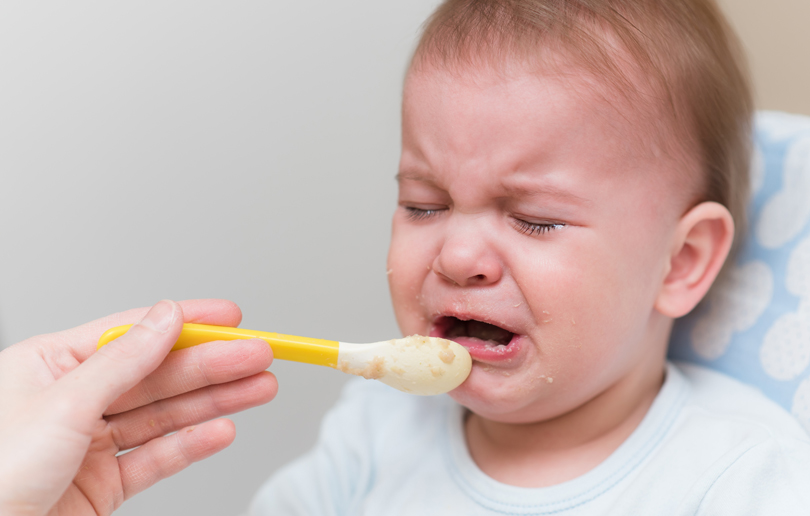 The level of the stress hormone in such children goes off scale and leads to irreversible consequences in the conditions of the formation of the psyche. Moreover, studies were conducted where they found that even if the children stopped crying with this method, as it turned out, this was due to an increased stress hormone and the “freeze or flight” reaction (that is, the children seemed to freeze). This method leads not only to the formation of distrust of the child with the closest people, but also subsequently to low stress resistance.
The level of the stress hormone in such children goes off scale and leads to irreversible consequences in the conditions of the formation of the psyche. Moreover, studies were conducted where they found that even if the children stopped crying with this method, as it turned out, this was due to an increased stress hormone and the “freeze or flight” reaction (that is, the children seemed to freeze). This method leads not only to the formation of distrust of the child with the closest people, but also subsequently to low stress resistance.
Reply
It seems that many do not know how to read and understand the essence of the text)) Ferber does not call on parents to torture and make their children faint, but offers a method by which both children and parents can finally normalize night sleep. There is no cruelty here. You need to pause and watch the baby. And if the child does not calm down or the cry of pain / hunger, then you need to take the child in your arms.
You need to pause and watch the baby. And if the child does not calm down or the cry of pain / hunger, then you need to take the child in your arms.
Reply
This is child abuse. Do you think your parents did this? Remember that little you who was very lonely and scared in the dark in the crib. Remember how you begged your mother to come, stroke, take in your arms, kiss and give protection. Remembered? Don't do this to your children.
Reply
He will not fall asleep, but will faint from overload
Reply
However, this method is very harmful to the psyche of the child.




